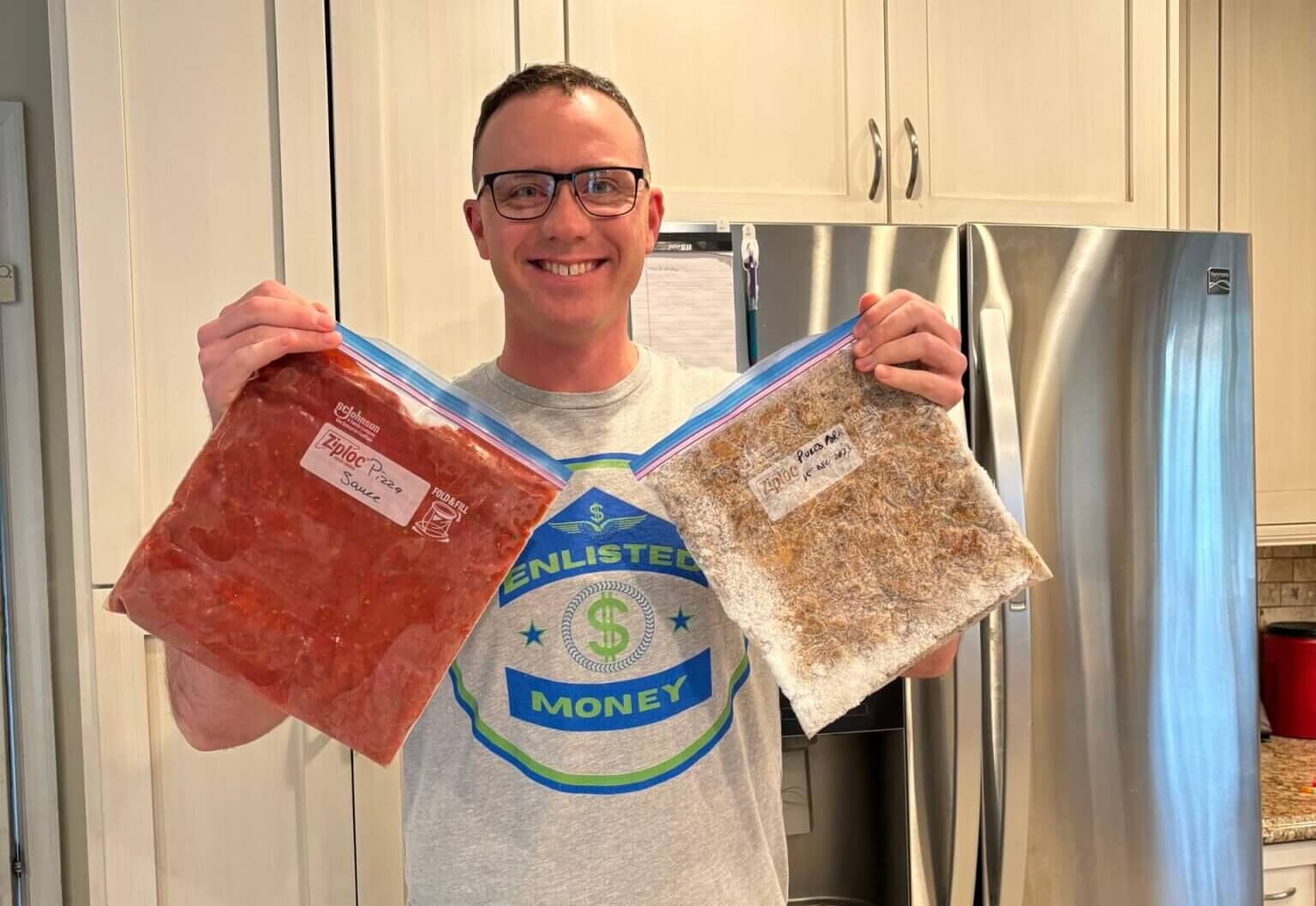Every trip to the grocery store feels more expensive than the last. Even worse, prices for high-quality foods that fuel most high-performance military families seem to be rising even faster. So, what are you supposed to do?
It may surprise you, but we’ve actually been able to keep our grocery budget from rising much over the last three years. Here are some of our family’s favorite tactics for trimming our grocery bill while eating healthy.
Brinner: Breakfast for dinner
No, I’m not talking about cheap cereal. We regularly make omelets, eggs with meat, or a nice quiche. These meals are packed with protein but easy on your wallet.
This is one of the first things I teach my troops to cook too. Breakfast is a really simple and cheap meal anyone can make.
Buy in bulk and freeze for later
We buy in bulk whenever we can and separate everything into freezer bags. This helps save money, control portions, and ensure we always have something to cook.
Pro Tip: Press foods flat when you freeze them. They stack easier and thaw much quicker. We save our leftover pulled pork like this then break a chunk off as needed to reheat.
Look for food drops
There are entire groups dedicated to local food drops. Not everything is a home run, but we’ve gotten great veggies and other food this way. It’s way better than letting the food go to waste.
RELATED: How service members can break the cycle of living paycheck to paycheck
Also, take full advantage of free food offered through the USO or other service organizations. Check with your local base and see if they have any free food giveaways.
Plan ahead and never buy anything you don’t need
Personally, I try to stay away from the grocery store. I have almost zero self-control when I walk into the commissary hungry. I’ll fill my cart and still forget the “one thing” I went in there for!
Planning a menu and making a list reduces impulse buys considerably. We use a weekly planner and only buy what we need. We also group meals so we can reuse ingredients and avoid spoiled food.
Don’t waste anything!
I have a visceral response to wasted food. I can’t stand throwing away money! We only cook enough food for each person and a leftover for my lunch the next day.
We also save parts of meals to use later. One example is when I cook a whole chicken in the crockpot. We’ll eat the thighs, legs, and wings for dinner and save some for leftovers. We add carrots and celery to the broth and breast meat to make chicken soup. We use our canner to preserve in a jar for later or if you don’t have a canner, you can freeze the broth and meat. Then add the vegetables when you make the soup later.
Regardless, we group meals that use the same ingredients. We don’t keep a lot of perishable food on hand unless we have a specific plan for it. We very rarely have any food go bad and put all our leftovers to good use.
The little things add up
The bottom line is you have to eat, but the little things can really add up over time. Even saving $1 per meal adds up to more than $1,000 per person per year. That’s a whole month of groceries or more for many families. If you take your grocery planning and budgeting seriously, you can find real savings to stretch those paychecks just a little further.











































